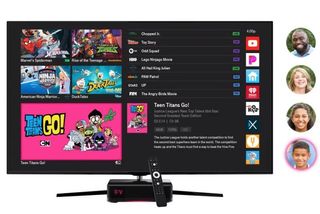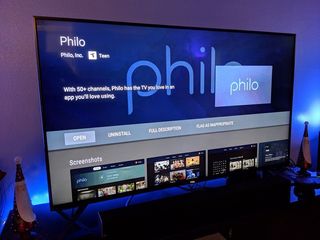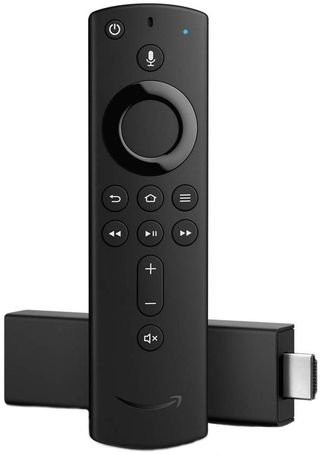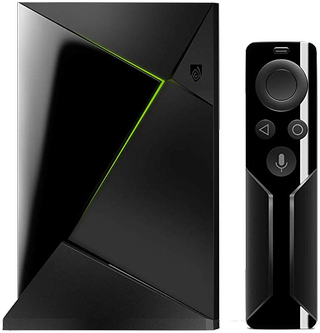TV streaming services have become the problem they were supposed to solve

Growing up in a home with satellite TV and being the cheapskate that I am, one of the most memorable announcements to come out of the tech space in the last few years is when DISH announced Sling TV at CES 2015. I distinctly remember watching the livestream, thinking it was one of the coolest things I'd seen in a while and jumping into the beta program as soon as I possibly could.
Sling TV was the first service of its kind, bringing live television programming to a streaming service that was considerably more accessible and affordable compared to what was being offered by the likes of Comcast, DirecTV, etc. It was the catalyst for a bunch of competitors, too, including PlayStation Vue, DirecTV NOW, Hulu with Live TV, YouTube TV, and more.
Like it or not, live TV streaming is getting more and more expensive with each year that passes.
This resulted in a really exciting couple of years, but shortly after this mini-revolution, things started changing. Most notably, things have started to get more expensive.
In 2018, Sling TV announced that its popular Orange Plan was increasing from $20/month up to $25. PlayStation Vue raised its prices twice — once in 2017 where all plans were increased by $10 extra per month and again in 2018 with another $5 increase across the board. Hulu lowered the price of its ad-supported on-demand service at the beginning of the year, but also sneakily upped its live TV option from $40/month up to $45/month.
And, perhaps the worst culprit of all, YouTube TV. It was already one of the pricier options around when it launched for $35/month, but over just two years, it's increased by $15 and now costs $50/month for new and existing customers alike.
In many of these cases, companies have tried to justify their price increases due to adding more channels to their respective lineups. Having more things to watch is great, but isn't that missing the entire point of the problem these services were supposed to solve in the first place?
One of the biggest complaints with cable and satellite is that you pay an outrageous amount of money each month for a bunch of channels you'll never watch. Things like Sling TV were supposed to give you the option to pay less and only get the channels you want to see, but that's very quickly starting to change. Now, we're being told that we're getting more for our higher bill even if we don't care about the channels being added. In other words, we're starting to get right back where we started.
Be an expert in 5 minutes
Get the latest news from Android Central, your trusted companion in the world of Android

And then there's the monstrosity that is T-Mobile TVision.
T-Mobile acquired a company called Layer3 TV in late 2017 with the promise to launch its own streaming television service and take on the hated cable companies. A lot of hype and excitement was built around this, not to mention some big delays. T-Mobile's TV service was finally announced last week as TVision, and boy, oh boy, is it a hot mess.
If these streaming services were supposed to make live television more affordable and accessible, T-Mobile straight-up ignored that rulebook and gave it the middle finger.
TVision comes bundled with a heap of channels (over 275, to be exact), will initially only be available in select markets across the U.S., and requires a physical set-top box for each TV you want to watch your shows on. And then there's the price. TVision costs $100/month (or $90/month if you're a T-Mobile wireless subscriber) in addition to an extra $10/month fee for additional boxes you want if you have multiple TVs throughout your home. At launch, T-Mobile will make the $90/month rate open to everyone.
Can someone explain to me how this is any different than cable?
Most TV streaming services aren't nearly as complex as TVision, but if T-Mobile's going down this route, what's to stop other companies from trying stuff like this, too? Prices are already increasing across the board, so if T-Mobile can get away with charging for physical boxes and a $100/month asking price, why wouldn't its competitors do the same?

To be fair, not all is dark and scary quite yet. Despite its price hike, Sling TV is still one of the most affordable options on the market and works on virtually everything. There's also underdog Philo, the service I personally subscribe to that costs $16/month for access to 45 channels, unlimited cloud DVR, and the ability to stream on up to three screens at once. There aren't any sports channels, but for someone like me that only really cares about March Madness, it works out really well. It's a slim offering of channels for a low price and is the exact opposite of what Spectrum tries to sell me every other day.
Internet-based TV streaming is really exciting and has plenty of room to grow, and with services like Sling and Philo, I have hope that it can still be used as a legit and unique alternative to cable. It's just that when we get price jumps every year and old cable traditions start creeping, I get a little worried as to where we're headed.
Some of our favorite cord-cutting gadgets

Amazon Fire TV Stick 4K ($50 at Amazon)
If you, like so many other people, use Amazon's Echo speakers, the Fire TV Stick is a great fit for your home. It works with most major streaming apps, including the likes of Sling TV, Hulu, Netflix, and much more. There's support for 4K streaming, buttons on the remote to control your TV's volume, and there's Alexa support!

Roku Premiere ($39 at Amazon)
One of the best value streaming sticks you can buy is the Roku Premiere. It offers 4K and HDR streaming, supports just about every channel/app you can think of, and can be controlled via the Google Assistant. For the price, what's not to like?

NVIDIA Shield TV ($170 at Amazon)
Want the most powerful streaming box money can buy? That's where the NVIDIA Shield TV comes into play. For video content, the Shield TV supports 4K and HDR to make your shows really pop. It also has the Google Assistant built-in, acts as a Chromecast target, and can play PC/console games using NVIDIA GeForce NOW.
Joe Maring was a Senior Editor for Android Central between 2017 and 2021. You can reach him on Twitter at @JoeMaring1.

